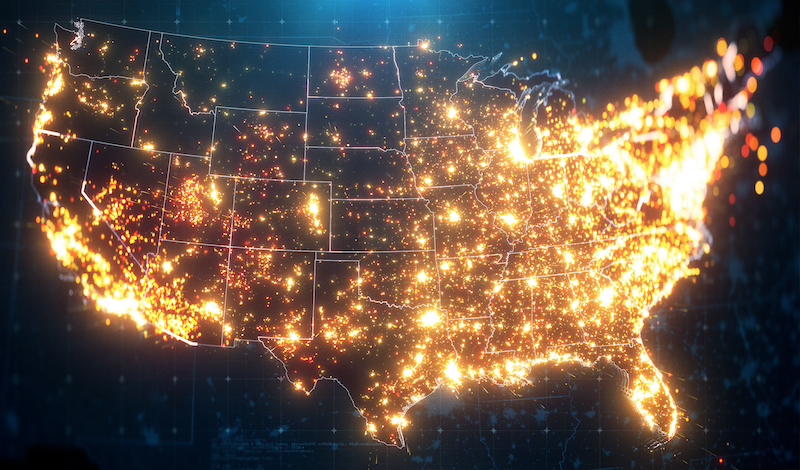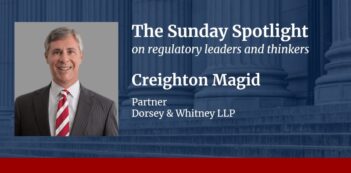
Scholar argues for federal action to tamp down on increasing light pollution.
The stars have served as a canvas for human ambition, guiding explorers across vast oceans and motivating ancient religions. But when people today gaze up at the night sky, they see an increasingly veiled canvas.
Nearly four out of five individuals live in areas where the brightness of human light sources reduces the visibility of the night sky. This “light pollution” has negative consequences for both humans and the natural environment, argues Eric Lystrup in a recent law journal article. Lystrup contends that the United States needs federal regulation to reduce the impacts of light pollution on our population and environment.
Light pollution takes several forms, according to Lystrup. Glare occurs when light shines directly into a person’s eyes, in some cases temporarily blinding them. Light trespass happens when light from one property shines onto another property. And the most pervasive form—skyglow—occurs when atmospheric particles reflect light back toward the ground, brightening the night sky.
All three of these forms of light pollution pose dangers to human health, Lystrup argues. The human body follows a 24-hour circadian rhythm that induces sleep and helps us wake up each day. An increase in nighttime light can upset this rhythm, leading to significant health consequences. These can include fatigue, increased risk of cancer, and even impairment of infants’ ability to develop consistent sleep cycles.
Light pollution also drastically affects wildlife and ecosystems, Lystrup argues. Animals such as birds and sea turtles that depend on the night sky for navigation can become confused by artificial lighting, sometimes causing them to veer off course and die. Light pollution can even interfere with organisms’ basic biological functions. Excessive light can cause animals to have a more difficult time reproducing and prevent trees from becoming dormant in the winter, which can kill them.
In addition, light pollution exacerbates climate change. The International Dark Sky Association estimates that the United States wastes one third of energy used for lighting each year — the equivalent of 30 million barrels of oil and 8.2 million tons of coal.
Given the pervasive negative effects of light pollution, humans have an obligation to reduce its impacts, Lystrup argues.
One avenue to mitigate light pollution would be through state and local regulation. Currently, “dark sky laws” in eighteen states mandate reductions in light pollution, usually by requiring shielding on light fixtures. Many of these laws, however, contain carveouts that exempt lighting from sources such as construction, industry, or even streetlamps.
Lystrup explains that states and communities often have little incentive to enforce strict measures against light pollution when neighboring areas have no regulation. Light pollution can spill across city or even state lines, rendering local regulation ineffective—as evidenced by the skyglow from Las Vegas visible as far away as southern Utah.
Lystrup argues that federal action can best overcome the collective action problem of light pollution by requiring all jurisdictions to adopt measures to reduce glare. One model Lystrup claims that the federal government could emulate is the Noise Control Act of 1972. This federal legislation authorizes the U.S. Environmental Protection Agency (EPA) to set limits on noise from sources such as cars, trains, and construction equipment. Lystrup contends that similar legislation targeted toward light pollution could give the federal government the power to regulate light pollution—perhaps by requiring shielding on all outdoor light sources manufactured within or imported into the United States
Even without new legislation, EPA may hold the power to regulate light pollution, Lystrup claims. The Clean Air Act gives EPA the power to set standards to protect the public from hazardous air pollutants—an authority the agency has used to regulate carbon dioxide emissions. If the EPA were to designate light as a harmful pollutant, Lystrup explains, it could set an upper threshold for acceptable light levels. Any state with areas exceeding these levels would need to create a plan to reduce light pollution.
But Lystrup notes that designating light as a pollutant would be a novel interpretation of the Clean Air Act, as EPA currently only regulates airborne gases under the Act. Furthermore, he argues the state-by-state approach to compliance under the Clean Air Act could lead to inefficiencies as states create different plans for complying with federal standards.
Regardless of which regulatory approach governments adopt, Lystrup contends that regulating light pollution—and saving the stars—is critical to protecting human health and the environment.



